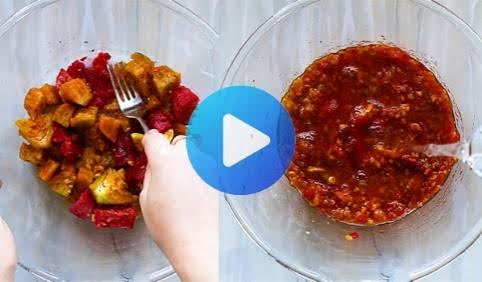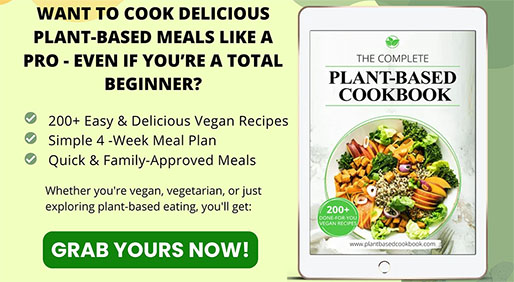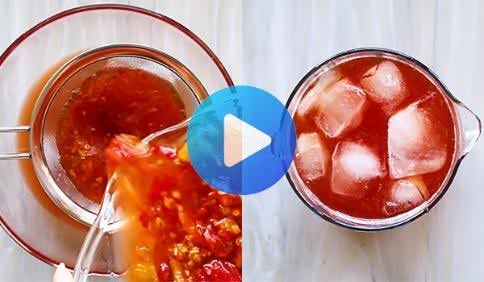Getting a flatter tummy is something many women I work with are interested in. It’s not just about how you look; it often means feeling healthier and more energetic too. While there’s no magic trick to instantly flatten your belly, making smart food choices is a huge part of the puzzle. One super simple and tasty way to pack in nutrients that support your goals is by drinking smoothies. But not just any smoothie will do. Some are loaded with sugar and can actually work against you.
I want to share some of my favorite smoothie recipes that are specifically designed to help you on your journey to a flatter belly. These aren’t complicated. They use simple ingredients you can find easily, and they taste great. More importantly, they are packed with the good stuff your body needs: fiber, protein, and healthy fats. These things help keep you full, support good digestion, and give you steady energy, all of which are important when you’re trying to manage your weight and reduce belly bloat.
Remember, smoothies are a tool, not a miracle cure. They work best when combined with overall healthy eating habits and regular movement. Think of them as a delicious boost to your already healthy lifestyle.
Why Smoothies Can Help
Before we get to the recipes, let’s talk a little bit about why the right kind of smoothie can be helpful.
- Nutrient Powerhouses: It’s easy to blend lots of healthy foods into one glass. Think spinach, kale, berries, seeds, and protein sources. Getting enough vitamins and minerals helps your body work efficiently.
- Fiber Friends: Many smoothie ingredients, especially fruits, vegetables, and seeds like chia or flax, are full of fiber. Fiber is amazing for digestion. It helps keep things moving smoothly through your system, which can reduce bloating and that uncomfortable puffy feeling. Fiber also helps you feel full, so you’re less likely to snack on unhealthy things later.
- Protein Packed: Adding protein to your smoothie is key. Protein takes longer to digest than carbohydrates, which means it keeps you satisfied for longer. This helps control hunger and cravings. Good protein sources for smoothies include plain Greek yogurt, protein powder (whey, casein, or plant-based options like pea or soy), cottage cheese, or even silken tofu. Protein is also important for maintaining muscle mass, especially if you are exercising and trying to lose fat. More muscle helps your body burn more calories even when you’re resting.
- Healthy Fats: Don’t be afraid of fats, as long as they are the healthy kind. Things like avocado, nuts, and seeds provide essential fatty acids. These fats also contribute to feeling full and satisfied after your meal. A little bit goes a long way.
- Hydration Help: Smoothies have a high water content, especially if you use water or unsweetened almond milk as your base. Staying hydrated is crucial for overall health and can also help reduce water retention and bloating.
- Controlling Added Sugar: When you make your own smoothies, you control the ingredients. This means you can avoid the heaps of added sugar often found in store-bought smoothies or juice bar creations. Natural sugars from whole fruits are fine in moderation, but we want to skip the syrups, sweetened yogurts, and sugary juices.
Building Your Flat Belly Smoothie
Think of building a smoothie like putting together a healthy meal in a glass. Here’s a simple formula:
- Liquid Base (1 – 1.5 cups): Start with a healthy liquid. Good choices include:
- Water
- Unsweetened almond milk
- Unsweetened cashew milk
- Unsweetened soy milk
- Coconut water (use in moderation due to natural sugars)
- Green tea (chilled)
- Protein Source (1 serving): This keeps you full and supports muscle.
- 1 scoop protein powder (whey, casein, pea, soy, rice)
- 1/2 cup plain Greek yogurt (0% or 2% fat)
- 1/2 cup cottage cheese
- 1/4 block silken tofu
- Fiber Boost (1-2 servings): Crucial for digestion and fullness.
- 1-2 tablespoons chia seeds
- 1-2 tablespoons ground flax seeds
- 1/4 cup rolled oats (uncooked)
- 1 handful spinach or kale (you won’t taste it much)
- 1/2 cup berries (low sugar fruit)
- 1/4 – 1/2 pear or apple (with skin)
- Healthy Fats (1 small serving): For satiety and nutrient absorption.
- 1/4 avocado
- 1 tablespoon nut butter (almond, peanut, cashew – check for no added sugar)
- 1 tablespoon seeds (pumpkin, sunflower)
- Flavor & Extras (Optional):
- 1/4 – 1/2 cup low-sugar fruit (berries, peach, small banana)
- Spices like cinnamon or ginger
- Unsweetened cocoa powder
- Vanilla extract
- Ice cubes (for thickness)
Important Note: Be mindful of portion sizes, especially with fruits and fats. While healthy, calories can add up quickly. Stick to the recommended amounts.
The Easiest Flat Belly Smoothie Recipes
Okay, let’s get blending. These recipes are simple, quick, and follow the healthy formula we just discussed. Feel free to adjust the liquid amount to reach your desired consistency.
1. Green Goodness Smoothie
This is my go-to when I want something refreshing and packed with greens. Don’t let the color scare you; it tastes great.
- Ingredients:
- 1 cup unsweetened almond milk
- 1 scoop vanilla protein powder (or unflavored)
- 1 large handful fresh spinach
- 1/2 small cucumber, chopped
- 1 tablespoon chia seeds
- 1/4 avocado
- Juice of 1/4 lemon (optional, for brightness)
- 4-5 ice cubes
- Instructions:
- Place the almond milk, spinach, and cucumber in the blender. Blend until smooth. This helps break down the greens first.
- Add the protein powder, chia seeds, avocado, lemon juice (if using), and ice cubes.
- Blend again until everything is smooth and creamy. Add a splash more almond milk if it’s too thick.
- Why it Works: Spinach and cucumber are hydrating and low in calories. Avocado provides healthy fats for satiety. Chia seeds add fiber. Protein powder keeps you full. Lemon juice adds vitamin C and a fresh taste.
2. Berry Blast Smoothie
Berries are fantastic because they are relatively low in sugar compared to other fruits and packed with antioxidants.
- Ingredients:
- 1 cup water or unsweetened cashew milk
- 1/2 cup plain Greek yogurt
- 1/2 cup mixed berries (frozen works great – strawberries, blueberries, raspberries)
- 1 tablespoon ground flax seeds
- Small handful of kale (optional, stems removed)
- 4-5 ice cubes (use less if using frozen berries)
- Instructions:
- Combine all ingredients in the blender.
- Blend until smooth and creamy. If using fresh berries and kale, you might blend the liquid, kale, and berries first before adding the rest.
- Why it Works: Berries provide fiber and antioxidants. Greek yogurt delivers a strong protein punch. Flax seeds offer fiber and omega-3 fatty acids. Kale adds extra vitamins without changing the flavor much.
3. Creamy Chocolate Peanut Butter Smoothie
Yes, you can have chocolate and peanut butter. The key is using the right ingredients in moderation. This tastes indulgent but is actually quite balanced.
- Ingredients:
- 1 cup unsweetened soy milk
- 1 scoop chocolate protein powder
- 1 tablespoon natural peanut butter (check label for only peanuts and maybe salt)
- 1 tablespoon unsweetened cocoa powder (for extra chocolate flavor)
- 1 tablespoon chia seeds
- 1/4 frozen banana (adds creaminess and a little sweetness)
- 4-5 ice cubes
- Instructions:
- Place all ingredients into the blender.
- Blend until very smooth. The frozen banana helps make it thick and creamy like a milkshake.
- Why it Works: Protein powder provides satiety. Natural peanut butter offers healthy fats and some protein. Chia seeds add fiber. Unsweetened cocoa powder gives chocolate flavor without sugar. Using only a small amount of banana keeps the sugar content reasonable while adding creaminess.
4. Tropical Ginger Zinger Smoothie
This one has a nice kick from the ginger, which is great for digestion.
- Ingredients:
- 1 cup coconut water (or water)
- 1/2 cup cottage cheese (low fat)
- 1/2 cup frozen mango chunks
- 1 tablespoon ground flax seeds
- 1 teaspoon fresh ginger, grated (or 1/4 teaspoon ground ginger)
- Handful of spinach (optional)
- 4-5 ice cubes (use less if using frozen mango)
- Instructions:
- Combine all ingredients in your blender.
- Blend until smooth. Make sure the ginger is well incorporated.
- Why it Works: Cottage cheese is an excellent source of protein. Mango provides vitamins and some sweetness (use in moderation). Flax seeds add fiber. Ginger is well-known for its digestive benefits and anti-inflammatory properties.
5. Apple Cinnamon Oat Smoothie
This tastes like apple pie in a glass but is much healthier. It’s great for a filling breakfast.
You Might Be Interested In: Learning more about The Complete Smoothie Detox & Weight Loss Program
- Ingredients:
- 1 cup unsweetened almond milk
- 1 scoop vanilla or unflavored protein powder
- 1/4 cup rolled oats (uncooked)
- 1/2 small apple, cored and chopped (leave skin on for fiber)
- 1 tablespoon almond butter
- 1/2 teaspoon cinnamon
- Pinch of nutmeg (optional)
- 4-5 ice cubes
- Instructions:
- Add all ingredients to the blender.
- Blend until smooth. The oats will thicken the smoothie slightly.
- Why it Works: Oats provide soluble fiber, which is great for heart health and keeps you full. Apple adds natural sweetness and more fiber. Almond butter contributes healthy fats and protein. Cinnamon can help regulate blood sugar levels.
Tips for Smoothie Success
- Invest in a Decent Blender: You don’t need the most expensive model, but a blender that can handle frozen fruit, ice, and greens smoothly makes a big difference.
- Prep Ahead: You can portion out dry ingredients (protein powder, seeds, oats) into small bags or containers. You can also freeze smoothie packs with fruit and greens. In the morning, just grab a pack, add your liquid and protein (if not already included), and blend.
- Listen to Your Body: Pay attention to how different ingredients make you feel. Some people digest certain protein powders or milks better than others. Adjust recipes based on your own tolerance and preferences.
- Don’t Drink Too Fast: Sip your smoothie slowly. Gulping it down can sometimes lead to bloating, defeating the purpose. Give your body time to register that it’s receiving nutrients.
- Clean Your Blender Immediately: Trust me on this one. Dried-on smoothie is much harder to clean. A quick rinse right after use saves time later.
Beyond the Blender: Other Flat Belly Factors
While these smoothies are fantastic tools, achieving and maintaining a flatter belly involves more than just what you blend. As a fitness and weight loss consultant, I always emphasize a holistic approach.
Move Your Body
Exercise is essential. It burns calories, builds muscle (which boosts metabolism), and helps reduce overall body fat, including visceral fat (the dangerous kind deep in your abdomen).
- Cardio: Activities like brisk walking, jogging, cycling, swimming, or dancing help burn calories. Aim for at least 150 minutes of moderate-intensity cardio per week.
- Strength Training: Building muscle is key. Include exercises that work major muscle groups (squats, lunges, push-ups, rows) at least two days per week. Don’t worry about getting “bulky”; for most women, strength training leads to a leaner, more toned look. Core-specific exercises like planks and bird-dogs are great, but overall fat loss is what reveals abdominal muscles. You can’t “spot reduce” belly fat just by doing crunches.
- Consistency is Key: Find activities you enjoy so you’ll stick with them. Even short bursts of activity throughout the day add up.
Stay Hydrated
Drinking enough water is surprisingly important for a flat belly.
- Reduces Bloating: Sometimes, when you’re dehydrated, your body holds onto water, making you feel puffy. Drinking enough water helps flush things out.
- Aids Digestion: Water helps fiber do its job, keeping your digestive system running smoothly.
- Boosts Metabolism: Some studies suggest that drinking water can temporarily increase your metabolic rate.
- Manages Hunger: Sometimes thirst is mistaken for hunger. Try drinking a glass of water before reaching for a snack.
Aim for around 8 glasses (64 ounces) of water per day, but your needs may vary based on activity level and climate. Water, herbal teas, and the liquid in your smoothies all count.
Get Enough Sleep
Never underestimate the power of sleep. When you’re sleep-deprived, your body produces more cortisol, a stress hormone. Elevated cortisol can lead to increased appetite, cravings for unhealthy foods, and more fat storage around your midsection.
- Aim for 7-9 hours: Most adults need this amount for optimal health.
- Create a Routine: Go to bed and wake up around the same time each day, even on weekends.
- Optimize Your Sleep Environment: Make your bedroom dark, quiet, and cool. Avoid screens (phones, tablets, TVs) for at least an hour before bed.
Manage Stress
Like lack of sleep, chronic stress increases cortisol levels, which can contribute to belly fat. Finding healthy ways to manage stress is crucial.
- Mindfulness and Meditation: Even a few minutes a day can make a difference.
- Deep Breathing: Simple breathing exercises can calm your nervous system.
- Yoga or Tai Chi: These practices combine movement with mindfulness.
- Spending Time in Nature: Getting outside can be very restorative.
- Hobbies: Engaging in activities you enjoy helps take your mind off stressors.
- Social Connection: Talking to friends or family can provide support.
Find what works for you and make stress management a regular part of your routine.
Focus on Whole Foods
Smoothies are great, but they should complement a diet rich in whole, unprocessed foods.
- Lean Protein: Chicken breast, fish, turkey, beans, lentils, tofu.
- Lots of Vegetables: Aim for a variety of colors. Non-starchy veggies like leafy greens, broccoli, peppers, and cauliflower are especially good choices.
- Whole Grains: Brown rice, quinoa, oats, whole wheat bread (in moderation).
- Fruits: Berries, apples, pears are good choices. Be mindful of portion sizes for higher-sugar fruits like bananas and mangoes.
- Healthy Fats: Avocados, nuts, seeds, olive oil.
Limit processed foods, sugary drinks, refined carbohydrates (white bread, pastries), and excessive saturated and trans fats. Pay attention to portion sizes, even with healthy foods.
Understanding Bloating vs. Belly Fat
It’s important to know that sometimes a “puffy” tummy isn’t actually fat, but bloating. Bloating is often temporary and caused by gas or water retention. Common triggers include:
- Eating too fast
- Carbonated drinks
- Certain foods (beans, lentils, broccoli, cabbage, onions – often very healthy foods)
- Artificial sweeteners
- Food intolerances (like lactose or gluten)
- Constipation
- Hormonal changes (common during the menstrual cycle)
The smoothies here, with their focus on fiber and hydration, can often help reduce bloating caused by poor digestion or constipation. If you experience persistent bloating, it’s a good idea to keep a food diary to identify potential triggers or talk to your doctor. Managing bloating can make your stomach feel flatter relatively quickly, while reducing actual belly fat takes more time and consistent effort with diet and exercise.
These easy smoothie recipes are a wonderful starting point or addition to your healthy lifestyle. They make it simple to get important nutrients that support weight management and digestive health. Remember to combine them with regular physical activity, good hydration, stress management, and adequate sleep for the best results on your journey to a flatter, healthier belly.
Related YouTube Video
Final Thoughts
Creating healthy habits, like incorporating nutrient-dense smoothies into your day, is a positive step towards your goals. Be patient with yourself and focus on consistency rather than perfection. Small changes add up over time, and nourishing your body well is always a worthwhile investment in your health and well-being. Enjoy experimenting with these recipes and finding your favorites.







